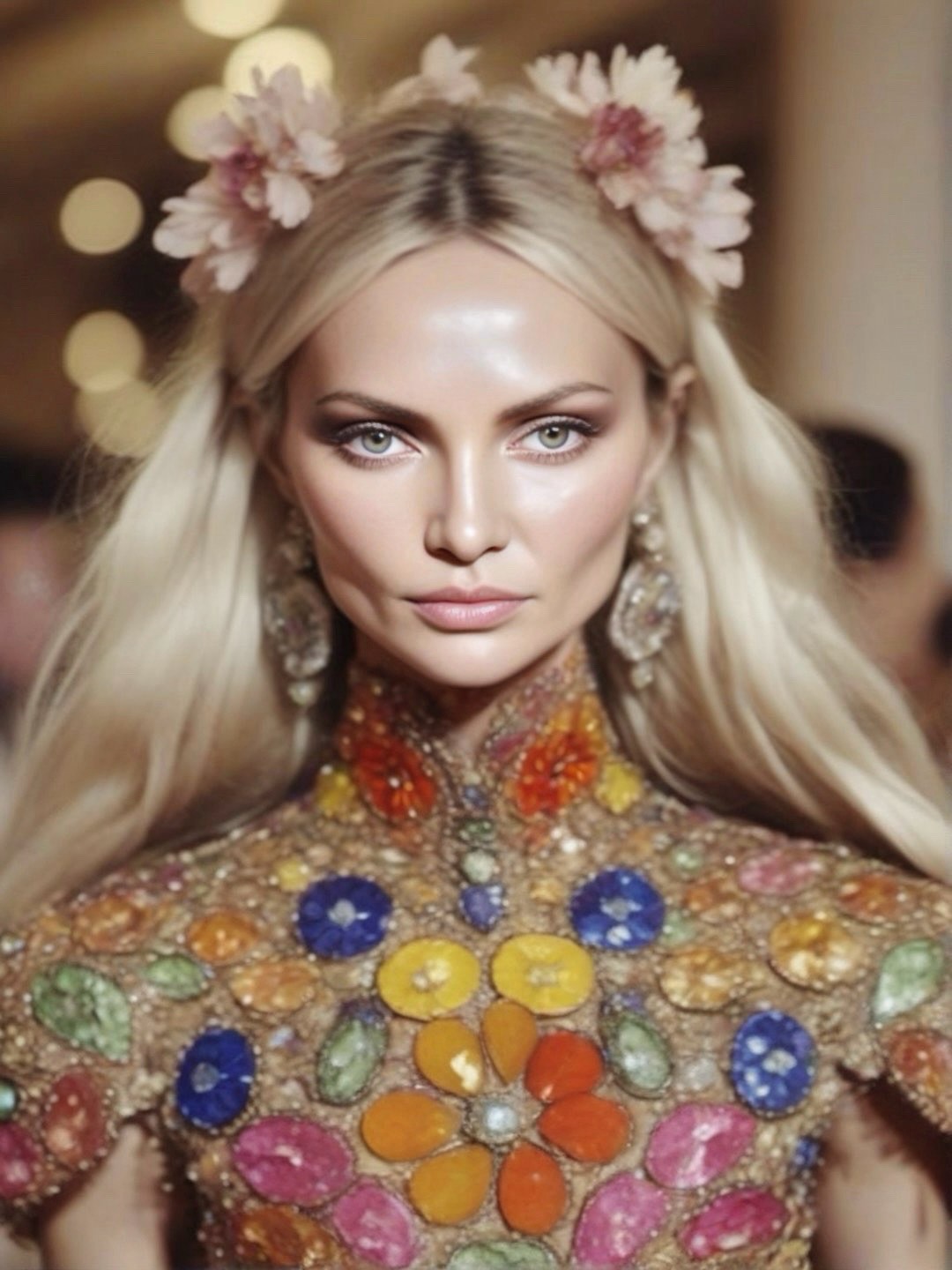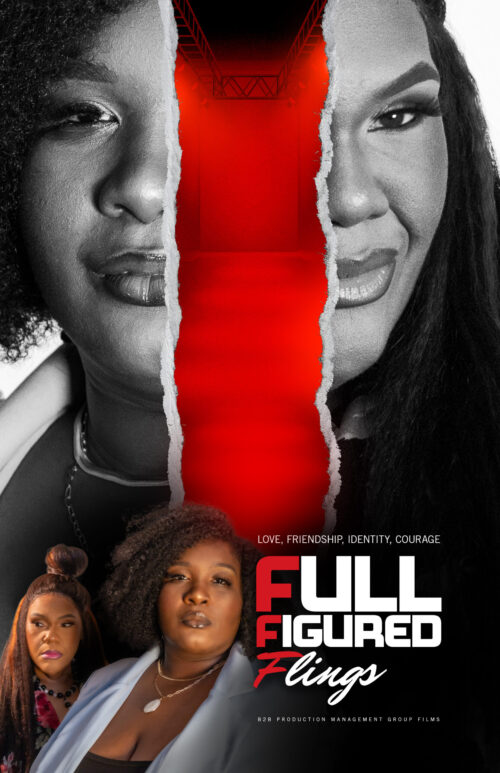We Speak Actors
Interview with top model, actress, stuntwoman, and filmmaker Gia Skova

After starting her career as a model, Gia has successfully made the transition into acting. Even though she starred as the lead actress in the movie The Serpent, it was also her directorial debut. As well as that, Gia is releasing her comic book!
Here, we catch up with Gia at New York Fashion Week to discuss her role in the event, as well as the passion she has for bridging the fashion and movie worlds together in her work.
Gia, can you tell us about the fashion show you are attending? What is your role in the show?
I’m thrilled to be part of the CatWalk FurBaby show at New York Fashion Week (September 5, 2024) at Sony Hall.
The second annual CatWalk FurBaby philanthropic fashion show was a resounding success, uniting models, designers, and furbabies to support an array of significant causes. Showcasing stunning designs and involvement from philanthropic organizations representing ELYSIAN Impact’s areas of giving, the event highlighted the power of collective action. It served as a catalyst, demonstrating that combined efforts can generate far-reaching effects, and proving that fashion and compassion can incite positive change in the world.
Combining fashion and philanthropy in support of diverse charitable causes, the event, presented by Elysian Impact and hosted by New York Fashion Week founder Fern Mallis, took place at Sony Hall during Runway 7’s NYFW shows.
As the lead model, I’m honored to be representing this innovative brand and showcasing their stunning designs on the runway.
I am thrilled to share that I won the prestigious Publisher’s Pick award in the opening show at NYFW! I was honored to share that win with the team at Operation Kindness from Texas and designer D’Marsh Couture. I was also delighted to be joined on the catwalk by an adorable Pomeranian dog named Daisy.
Being part of this show means the world to me, especially since it’s at New York Fashion Week, one of the most prestigious events in the industry. It’s a celebration of fashion, art, and creativity, and I feel privileged to be among the best of the best. But what truly resonates with me is the opportunity to be inspired by other women. As a model, I’ve had the chance to work with incredible designers, stylists, and models, and I’m constantly in awe of their talent, dedication, and passion. Seeing women succeed and push boundaries motivates me to do the same. It’s a reminder that we’re stronger together and that our collective success is what truly matters. This show is particularly special because it’s not just about the clothes or the runway—it’s about the community, the camaraderie, and the shared passion for fashion. I’m excited to be part of this celebration and to be inspired by the incredible women around me.
How does it feel to be part of the show?
It’s an absolute honor to be part of this prestigious event. New York Fashion Week is a highlight of my career, and I feel privileged to be working alongside top designers, models, and industry professionals. The energy backstage, the excitement of the crowd, and the thrill of strutting down the catwalk—it’s an exhilarating experience that never gets old. Having transitioned from a successful modeling career to becoming an action actress, I cherish the memory of that pivotal step. I’m passionate about bridging the two worlds by incorporating designer talents into my film work.
What do you think makes NYFW so special?
Having walked the runways of Paris, Italy, and Asia, I can confidently say that New York Fashion Week stands out for its cosmopolitan flair and opportunities to discover fresh perspectives on style. For me, being part of NYFW is always a source of inspiration for my film work. I often collaborate with art directors to bring my ideas to life for my movie characters’ looks.
Notably, I worked with renowned costume designer Roger J. Folker on the movie Bleed for This alongside Miles Teller and on The Serpent, which I directed and starred in. His impressive portfolio includes styling Brad Pitt in Mr. and Mrs. Smith. I always draw upon my fashion expertise to inform my creative decisions in film. We created a distinct image for the heroine Lucinda, a comic book character who joins the ranks of iconic heroes like Batman, Spider-Man, and Catwoman. As the creator of this character, I had the opportunity to contribute to her stylish wardrobe and accessories when we worked on the first part of The Serpent, with Roger’s guidance. This is where fashion and cinema intersect.
What does it mean to you to be inspired by other women?
It means everything. As a woman in a competitive industry, it’s easy to get caught up in comparison and competition. But when I see other women succeeding, pushing boundaries, and breaking barriers, it motivates me to do the same. I believe in the power of female empowerment and the importance of lifting each other up. Being inspired by other women reminds me that we’re stronger together and that our collective success is what truly matters.
We Speak Actors
Full-Figured Flings Teaser Nears 14K Views – Director of Photography Offers Special Father’s Day Release

Back 2 the Basics Production Management Group is proud to announce the official teaser premiere for FFF: Full-Figured Flings, a bold and unapologetic new film celebrating full-figured women and challenging the norms of beauty in Hollywood. Clocking in at just 46 seconds, the teaser doesn’t waste a moment, delivering a powerful visual and emotional punch that sets the tone for a project rooted in body positivity, size inclusivity, and cultural truth.
Premiering ahead of the 20th anniversary of Phat Girlz (2006), FFF serves as both homage and evolution. The film expands the conversation around colorism, sizeism, and shapeism, spotlighting women who have often been cast aside, sidelined, or silenced.

“This teaser is more than a preview—it’s a declaration,” said Lillie Mae Jones, creator and producer. “FFF is our love letter to the women who’ve never been centered but have always been essential. We’re not just telling stories—we’re shifting the lens.”
FFF: Full-Figured Flings is currently in development as a non-union independent production, with plans to release in 2026. The film invites audiences and allies to follow, support, and amplify the message through community engagement, open casting calls, and creative collaborations—including the launch of a nationwide call for a “Big Girl Anthem” to serve as the film’s official theme song.


Accept the Challenge…
The buzz is building fast around the highly anticipated full-figured fashion experience FFF, and now there’s a challenge on the table that fans won’t want to miss.
After racking up 11,000 views in less than 10 days, the official teaser video for FFF on YouTube is quickly gaining momentum. And now, the film’s Director of Photography, Dominique Perry, has thrown down a bold offer:
“If we hit 20,000 views before Saturday, June 14th, I’ll drop an exclusive second teaser on Father’s Day.”
This is more than a film—it’s a movement. FFF is a high-fashion, high-impact visual celebration of full-figured women taking a stand for representation, inclusion, and power on and off the runway.
Here’s how you can help make it happen: Watch the teaser now on YouTube. Like, comment, and subscribe. Share it with your community and post why YOU stand in solidarity with full-figured women
Watch here for a taste of the boldness, beauty, and energy
-

 We Speak Volleyball5 days ago
We Speak Volleyball5 days agoBuilt for the Pressure, Wired to Compete: Loretta Duby’s Passionate Pursuit of Purpose Through Volleyball
-

 We Speak Track And Field1 week ago
We Speak Track And Field1 week agoShe Doesn’t Chase Medals, She Earns Them: Inside Aniyah Walker’s Drive And Dedication
-

 We Speak Track And Field1 week ago
We Speak Track And Field1 week agoPurpose in Every Throw, Anchored by Faith: Keira Frye’s Path to Greatness
-

 We Speak Boxing1 week ago
We Speak Boxing1 week agoGloria Bautista “The Pink Panther”: Calm Power In The Super Flyweight Division

















